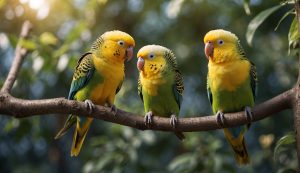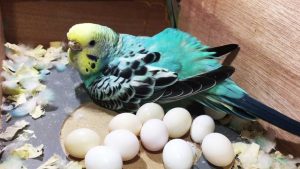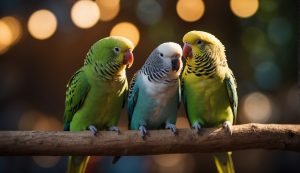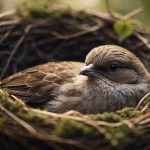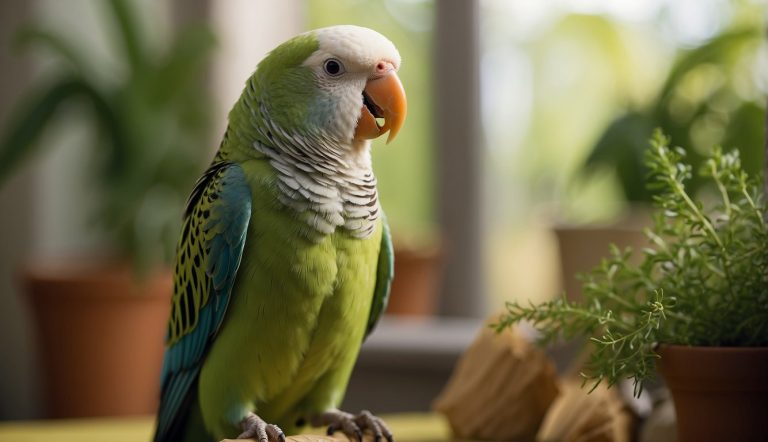What is a Parakeet’s Lifespan: Unveiling Their Life Expectancy

When it comes to the charming world of parakeets, one of the most common questions I come across is about their lifespan.
Parakeets, which are a part of the broad Psittaciformes order, are known for their sociable and affectionate nature, making them popular pets. The average lifespan of a parakeet is influenced by various factors, including diet, environment, and quality of care.
In captivity, these small to medium-sized parrots can live significantly longer than their wild counterparts due to controlled conditions that minimize threats from predators, disease, and food scarcity.
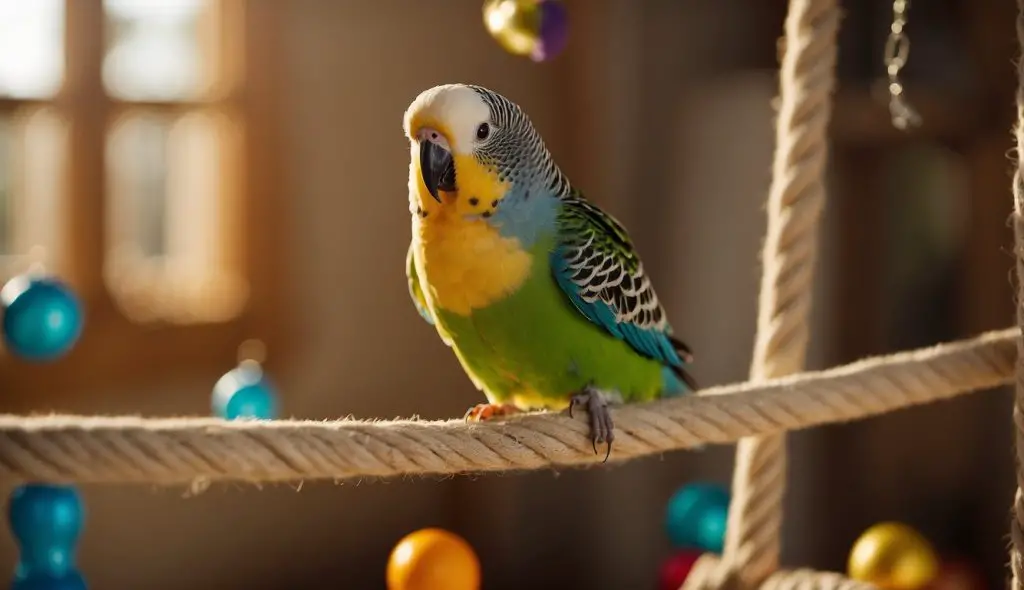
Understanding the factors that contribute to a parakeet’s lifespan helps owners provide the best care for their feathered friends.
Optimal nutrition tailored to a parakeet’s specific needs, regular veterinary check-ups, and a safe, stimulating home environment can all play pivotal roles in extending their life.
Recognizing the stages of a parakeet’s life cycle, from the juvenile phase to adulthood, is also key in implementing age-appropriate care and spotting health issues early on.
Key Points
- Parakeets can have a varying lifespan influenced by care, environment, and diet.
- Proper care can greatly extend the average life expectancy of parakeets in captivity.
- Recognizing a parakeet’s life cycle stages is crucial for providing appropriate care.
Table of Contents
Parakeet Lifespan Factors
I’ve always found Parakeets to be such endearing companions, but caring for them properly is essential for their longevity. Their lifespan can be influenced by several critical factors, and I’m here to guide you through understanding the role of diet, exercise, socialization, and healthcare in maximizing their years with us.
Diet and Nutrition
A balanced diet is crucial for my Parakeet’s health and longevity. I ensure they have a mixture of:
- Seeds: A limited part of their diet, as they can be high in fat.
- Pellets: Formulated to provide complete nutrition.
- Fruits and Vegetables: Essential for vitamins and minerals; I especially offer leafy greens.
- Fresh Water: Always available and refreshed daily to maintain hydration.
I avoid giving them avocado, chocolate, or caffeine, as these can be toxic.
Exercise and Enrichment
Exercise is vital for maintaining my Parakeet’s physical health, so I:
- Provide a sizeable cage for flying and movement.
- Include perches of various sizes to exercise their feet.
- Add toys for mental stimulation and physical play.
Daily out-of-cage time in a safe, bird-proofed space lets them really stretch their wings.
Socialization and Mental Health
Parakeets are social by nature, requiring interaction for their mental well-being. I make time to:
- Talk and socialize with them every day.
- Teach them new tricks, which keeps their mind active.
- Allow them to socialize with other Parakeets if possible, to prevent loneliness.
Healthcare and Illness Prevention
Regular preventive care is the key to a healthy life for my Parakeet. My focus is on:
- Annual check-ups with a vet experienced in avian care.
- Monitoring for symptoms of illnesses, like Psittacosis, tumors, or cancer.
- Maintaining cleanliness in their living space to prevent disease.
A clean environment and prompt medical attention can greatly extend their lifespan.
The Parakeet Life Cycle
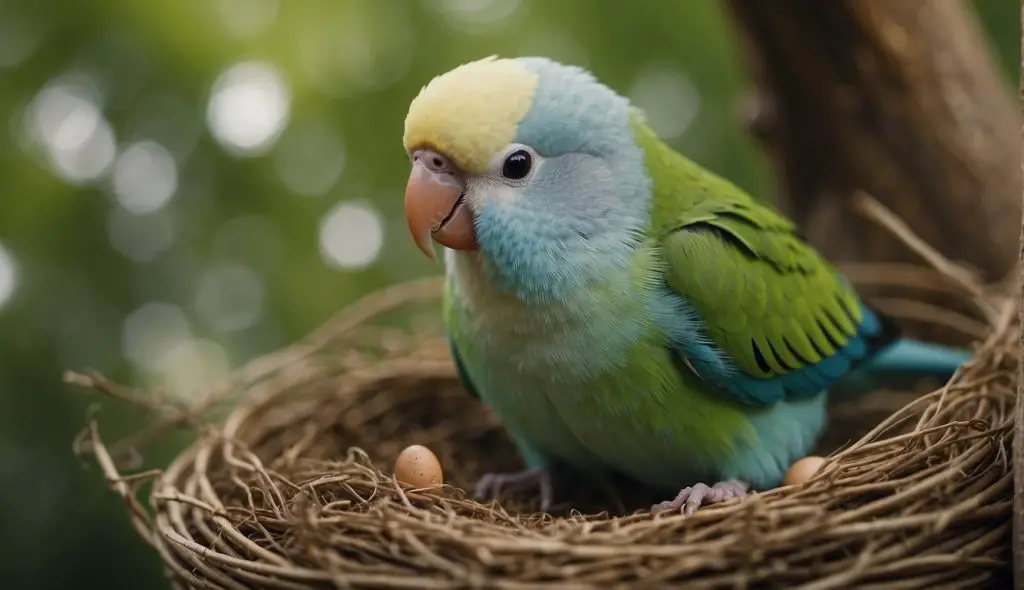
In my exploration of parakeets, I’ve found their lifecycle to be a fascinating journey from delicate hatchlings to experienced seniors. Let’s delve into the different stages and the influence of breeding and genetics.
From Hatchling to Senior
Baby parakeets, or hatchlings, begin their life clad in soft down, relying entirely on their parents for nourishment and warmth.
Over the first few weeks, they transform into juveniles with new feather growth, marking the beginnings of their independence.
As parakeets enter the young adult stage, their diet expands, and their personalities begin to shine. This is when they typically learn to fly and become more social.
Transitioning to adulthood, these birds mature in their coloration and behavior. Adult parakeets display the full vibrancy of their species and are active and inquisitive.
Some popular types of adult parakeets that people often keep as pets are lovebirds and conures, each with its unique traits and care requirements.
The senior stage in a parakeet’s life cycle shows a decrease in activity. Aged parakeets might need more specialized care and attention to maintain their health and comfort.
Breeding and Genetic Factors
In terms of breeding, two parakeets can produce several clutches per year, each containing multiple eggs.
Genetic variation is crucial for a healthy brood; however, issues like inbreeding can introduce health problems and reduce genetic diversity.
Breeding choices can also impact the lifespan and health of parakeet populations. Certain traits selected by breeders can influence the robustness and longevity of these charming birds. It’s up to responsible breeding practices to ensure the vitality of each generation.
Caring for Parakeets in Captivity
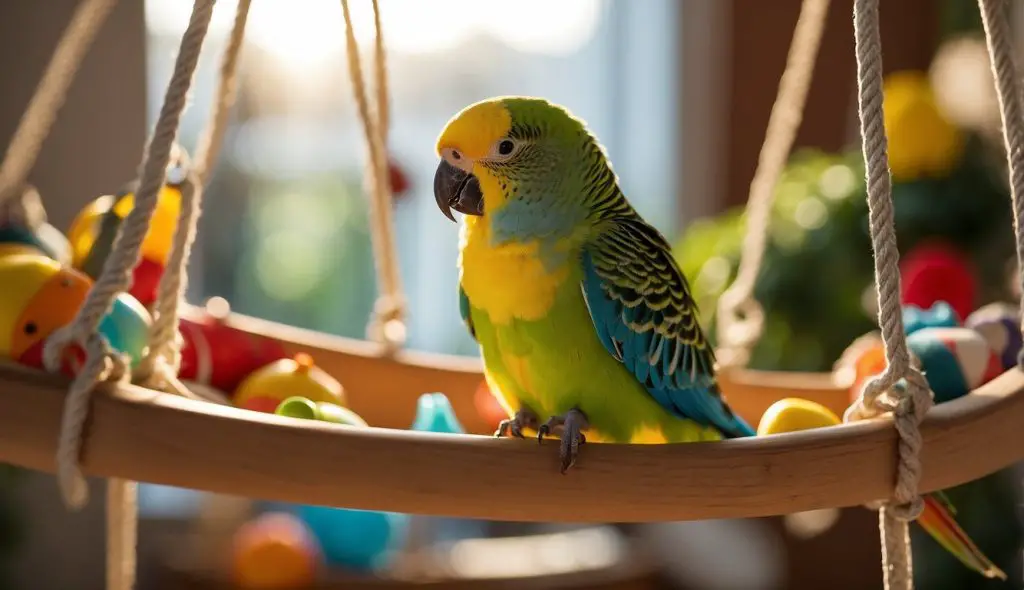
I believe that the key to a happy and healthy parakeet in captivity is providing a safe environment and proper companionship. This ensures not only their well-being but also potentially extends their lifespan.
Housing and Safety
The cage is my parakeet’s home, and I make sure it’s a spacious one where they can fly and exercise. I typically use a cage that’s at least 18x18x24 inches, but larger is always better. Here’s what I include for a secure habitat:
- Bar spacing: No more than 1/2 inch apart to prevent escape or injury.
- Perches: Varied sizes to exercise their feet.
- Toys: To stimulate their minds and encourage physical activity.
- Feeding bowls: Positioned at varying levels for ease of access.
- Cleanliness: Regular cleaning to prevent disease.
I place the cage in an area with natural light and away from predators such as falcons and snakes. This also means keeping them away from windows where predator shadows could pass and cause stress.
Companionship and Lifespan
As with many pet birds, parakeets are social creatures. I know they need interaction, whether with me or another parakeet. Here are my observations on companionship:
- Social Interaction: Daily interaction with me or a feathered friend keeps my parakeet mentally stimulated.
- Pairing: If considering a second parakeet, I watch closely to ensure they get along.
Friendships contribute to their emotional well-being, which I’ve learned can tie into the length of their lifespan in captivity. A solitary parakeet can become lonely and depressed, while a pair may live more contentedly. My goal is always to make their years as my pet both plentiful and joyful.
Frequently Asked Questions
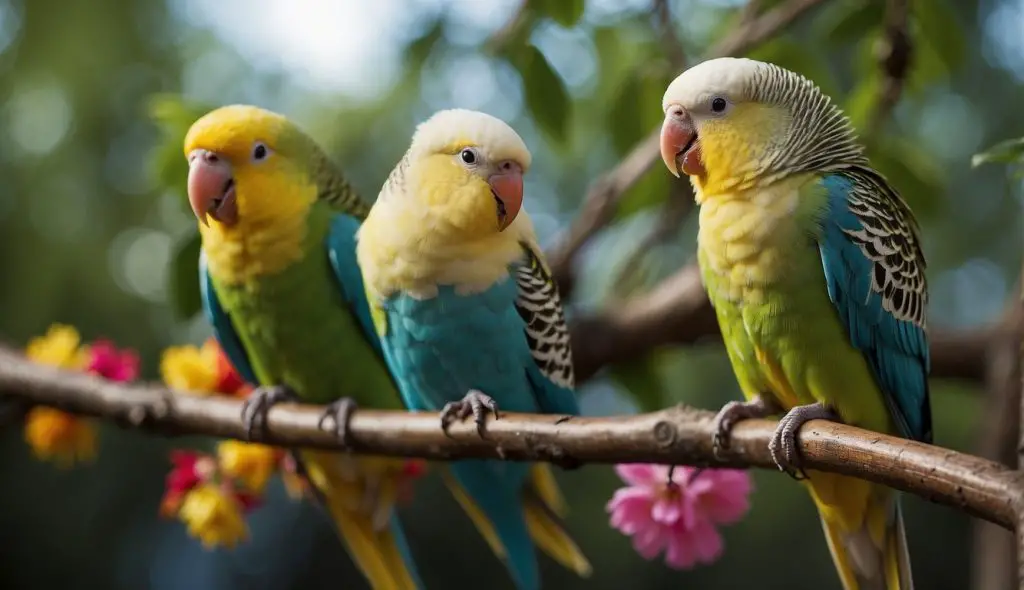
In this section, I’ll cover some of the most common inquiries regarding the lifespan of parakeets, touching on different types, diets, and environments.
How long does a blue parakeet typically live?
Blue parakeets, a color variation of budgies, can live up to 10-15 years with proper care, including a balanced diet and regular veterinary check-ups.
What’s the average lifespan of parakeets in the wild?
Parakeets in the wild have a shorter average lifespan of around 4-6 years, due to natural predators, disease, and environmental challenges.
Does the lifespan differ between male and female parakeets?
There isn’t a significant difference in lifespan between male and female parakeets. Both can live similar lengths if they’re healthy and well-cared-for.
What is the life expectancy of a budgie on a seed-only diet?
A seed-only diet can lead to nutritional deficiencies, potentially reducing a budgie’s lifespan to 5-7 years, which is shorter than if they were to have a varied and balanced diet.
How long are monk parakeets known to live?
Monk parakeets, also known as Quaker parrots, generally live around 15-20 years in captivity when they receive proper nutrition and care.
What is the typical lifespan of parakeets when kept as household pets?
When kept as household pets and given good care, parakeets usually live for about 10 to 15 years. However, this can vary depending on their diet, environment, and genetics.

